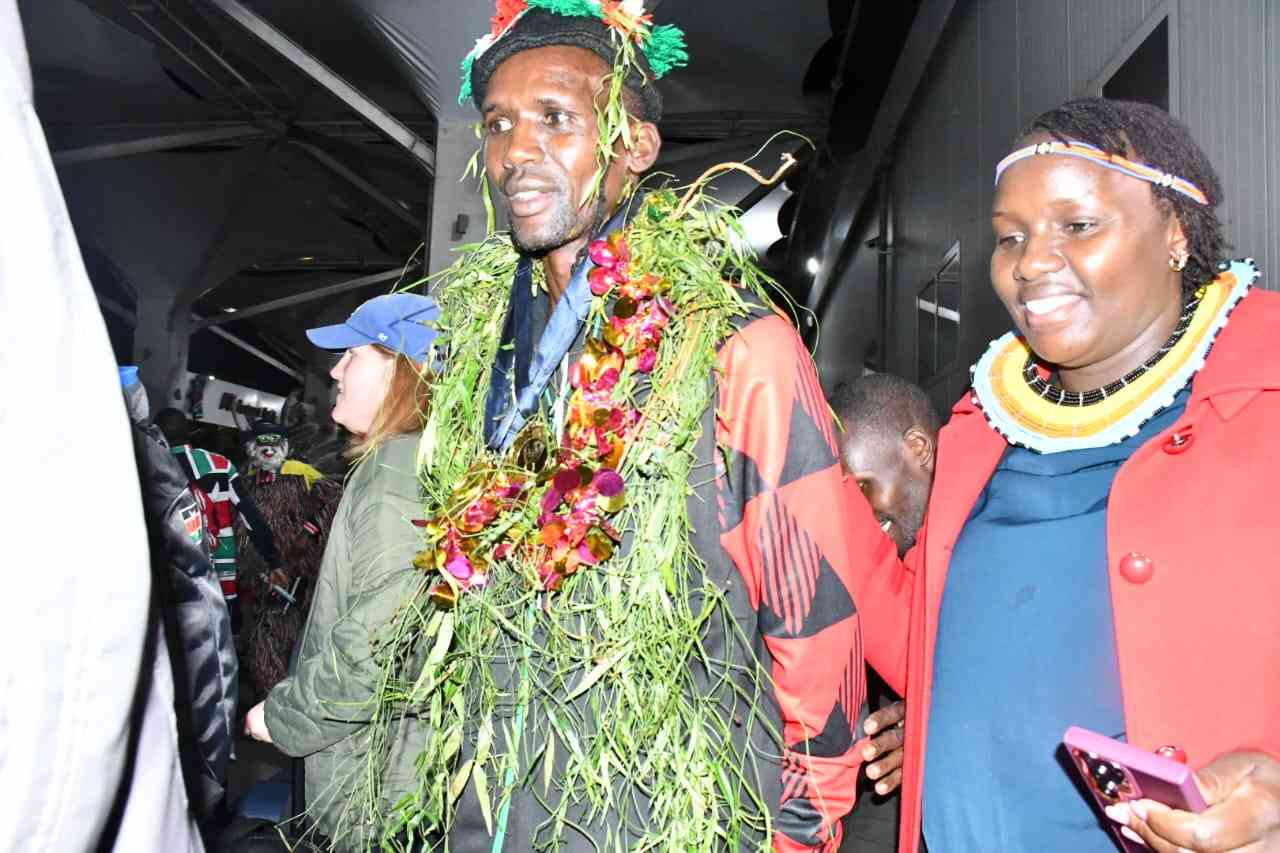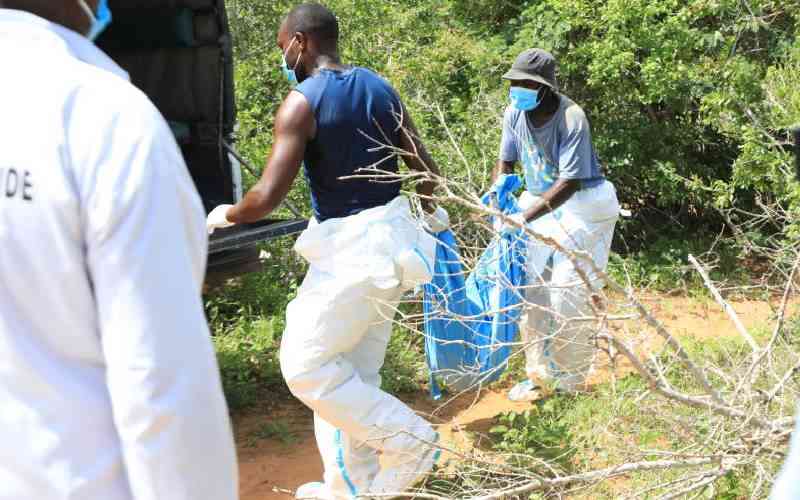By Erick Ochieng’
The bursts of ‘aah’ and ‘ooh’, punctuated with clapping, laughter and sometimes dead silence were an indication that the spectators were not watching an ordinary game.
Apart from sports journalists and officials familiar with the game, most of the audience who included Government officials, sponsors and curious fans had never been to a game of Sitting Volleyball.
Most of the fans who thronged the venue clearly were out for entertainment and to learn how the game is played.
When the referee blew the whistle to kick off a duel pitting the Kenya Women Sitting Volleyball team against Uganda, it was a delight to watch every move in this strange game. |
It was sheer ecstasy for the Kenya Women Sitting Volleybal Team after they qualified last week for the world championships slated for July in the US. [PHOTOS: STAFFORD ONDEGO/STANDARD] |
On the smooth, paneled surface of the Moi International Sports Centre’s (MISC) gymnasium, the players kept the ball in the air while sitting.
Hard strokes
"They glide, they slide, lie backwards and sideways as they sweep the ball with hard strokes," one commentator for an FM radio station could be heard saying above the din that greeted the start of the game.
The Women’s Sitting Volleyball African Championship was underway at MISC and the thrills and frills were not confined to strict rules that dictate that the players must remain sitting while touching the ball, even though some have just minimal disabilities.
The game is played by people with disabilities, including some with minimal movement limitations.
The championships were to compete for a place in the World Championships in Oklahoma, USA, in July. The Kenyan men team had secured their slot earlier in Rwanda, Kigali and the women were urged on by fans to follow suit.
They won against Uganda, Burundi and DR Congo, beating each 3-0 and drawing a standing ovation from the crowd. Players acknowledged cheers while sitting and those who could stand jumped to their feet.
Even for sports journalists who had not had frequent exposure to the unique game, it was an experience in discovery.
Various forms of disability keep most of the players confined to a sitting position but, strict rules standardise the movement of players.
Stay informed. Subscribe to our newsletter
Jump snd spike
While players in normal volleyball dive, jump and spike the ball, players in this game strive to keep it in the air without losing contact with the ground. What may seem an infringement in normal volleyball is allowed in this game.
For instance, in sitting volleyball they are allowed to touch the opponent’s ground under the net with their feet, provided they do not touch their rivals.
The prime rule is, the player must be seated whenever the hand comes into contact with the ball.
Notwithstanding the little exposure Kenyans have had in this game, the men and women teams showed the country is emerging as a regional powerhouse in Africa.
For one to be a force to reckon with in sitting volleyball, which was introduced to Kenya just in 2006, one has to master the balancing act and be swift in movement.
During action
Josef Banfi, who is among the individuals who have helped fine-tune the game among Kenyan players, says swiftness and balancing matter during action.
He reiterates the two attributes helped him gain fame in Netherlands.
"In normal volleyball you move with your legs and play with your hands but in sitting volleyball you move with your back and hands and play with your hands," say Banfi.
Even though Banfi’s legs were amputated after being severed by agricultural equipments as a child, it did not deter him from rising to be an internationally recognised coach in the game for people with disabilities.
Kenya women’s captain Doris Atieno is also an expert in balancing and swiftness.
"Our greatest challenge in the team is movement, I am the only person in the team who can move swiftly and if all of us can just try to increase speed then we can hope to do well in Oklahoma," says 32-year-old Atieno.
According to World Volleyball Organisation for the Disabled (WVOD) President Pierre Van Meneene, the net height has to be low because players have low reach.
 The Standard Group Plc is a
multi-media organization with investments in media platforms spanning newspaper
print operations, television, radio broadcasting, digital and online services. The
Standard Group is recognized as a leading multi-media house in Kenya with a key
influence in matters of national and international interest.
The Standard Group Plc is a
multi-media organization with investments in media platforms spanning newspaper
print operations, television, radio broadcasting, digital and online services. The
Standard Group is recognized as a leading multi-media house in Kenya with a key
influence in matters of national and international interest.
 The Standard Group Plc is a
multi-media organization with investments in media platforms spanning newspaper
print operations, television, radio broadcasting, digital and online services. The
Standard Group is recognized as a leading multi-media house in Kenya with a key
influence in matters of national and international interest.
The Standard Group Plc is a
multi-media organization with investments in media platforms spanning newspaper
print operations, television, radio broadcasting, digital and online services. The
Standard Group is recognized as a leading multi-media house in Kenya with a key
influence in matters of national and international interest.










